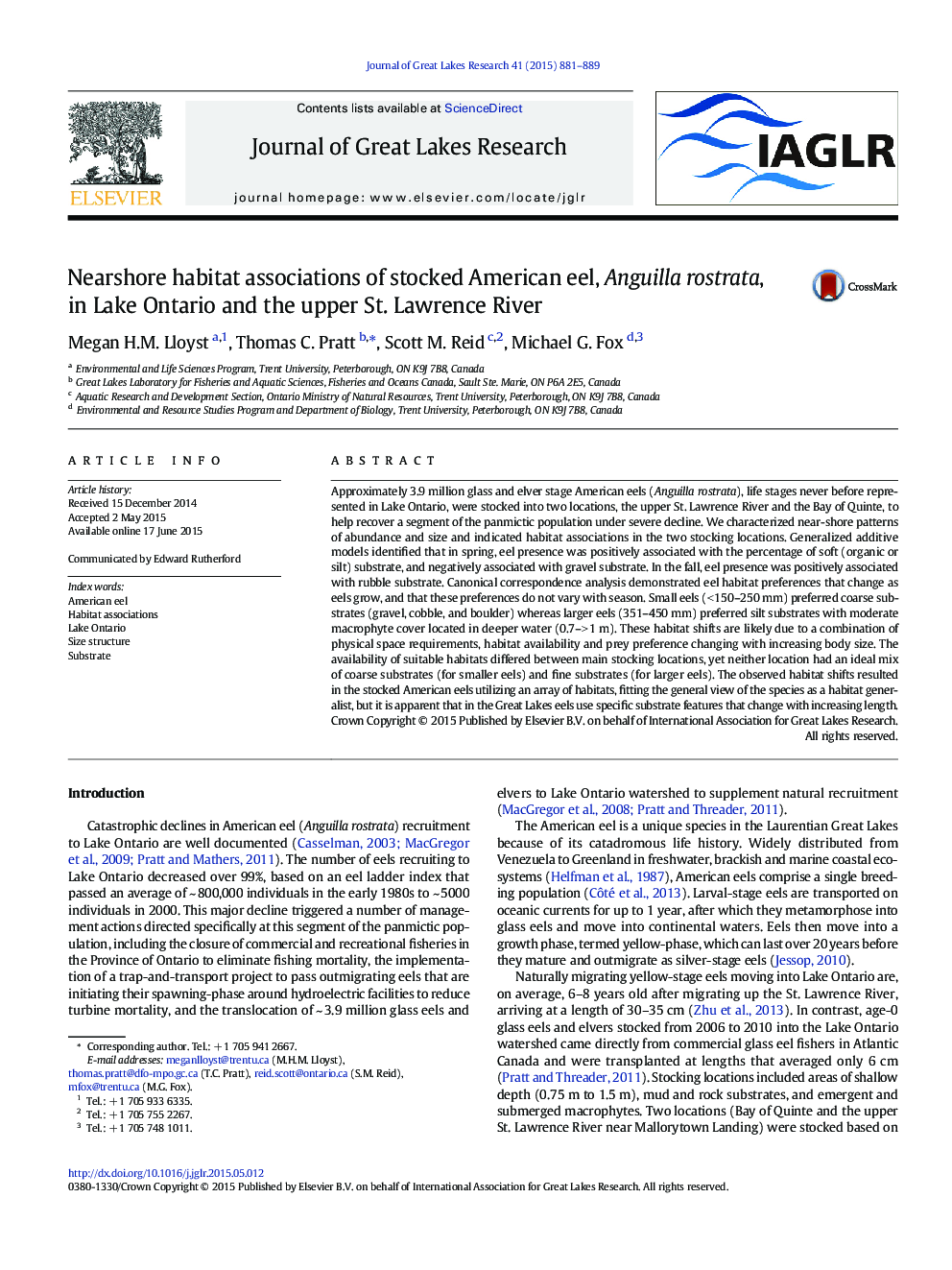| Article ID | Journal | Published Year | Pages | File Type |
|---|---|---|---|---|
| 6304972 | Journal of Great Lakes Research | 2015 | 9 Pages |
Abstract
Approximately 3.9 million glass and elver stage American eels (Anguilla rostrata), life stages never before represented in Lake Ontario, were stocked into two locations, the upper St. Lawrence River and the Bay of Quinte, to help recover a segment of the panmictic population under severe decline. We characterized near-shore patterns of abundance and size and indicated habitat associations in the two stocking locations. Generalized additive models identified that in spring, eel presence was positively associated with the percentage of soft (organic or silt) substrate, and negatively associated with gravel substrate. In the fall, eel presence was positively associated with rubble substrate. Canonical correspondence analysis demonstrated eel habitat preferences that change as eels grow, and that these preferences do not vary with season. Small eels (<Â 150-250Â mm) preferred coarse substrates (gravel, cobble, and boulder) whereas larger eels (351-450Â mm) preferred silt substrates with moderate macrophyte cover located in deeper water (0.7->Â 1Â m). These habitat shifts are likely due to a combination of physical space requirements, habitat availability and prey preference changing with increasing body size. The availability of suitable habitats differed between main stocking locations, yet neither location had an ideal mix of coarse substrates (for smaller eels) and fine substrates (for larger eels). The observed habitat shifts resulted in the stocked American eels utilizing an array of habitats, fitting the general view of the species as a habitat generalist, but it is apparent that in the Great Lakes eels use specific substrate features that change with increasing length.
Related Topics
Physical Sciences and Engineering
Earth and Planetary Sciences
Earth and Planetary Sciences (General)
Authors
Megan H.M. Lloyst, Thomas C. Pratt, Scott M. Reid, Michael G. Fox,
